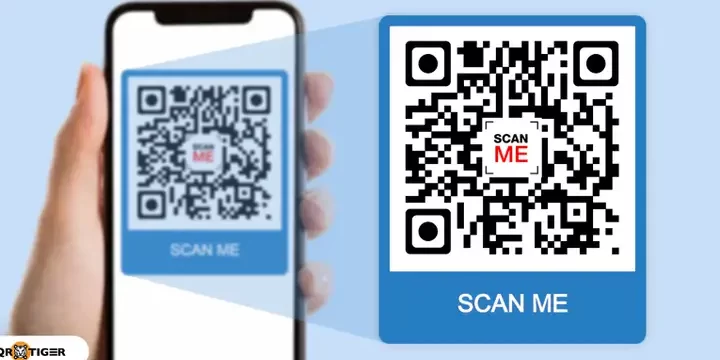Quick Response codes, or QR codes for short, have been making waves across industries for their ability to store a lot of information and quickly share it. What’s fascinating about these two-dimensional barcodes is that they were initially developed in 1994, but now their usage is more relevant than ever. Here are five interesting facts about QR codes that will make you appreciate their versatility:
Given the pace at which technology is moving, these codes are likely to evolve even more. The possibilities are endless, and it’s exciting to think about how QR codes will be used in new and innovative ways.
Understanding QR Codes: Definition and Meaning
QR Codes, short for Quick Response Codes, are two-dimensional barcodes that contain a pattern of black squares on a white background. With the emergence of mobile devices like smartphones, QR codes serve as a convenient way to store and transmit information. The technology allows users to access information quickly by scanning a code via their mobile devices.
The information contained in a QR code varies from texts, URLs, emails, phone numbers, and other types of data. QR codes can be found on posters, billboards, product packaging, business cards, and other marketing materials. They are commonly used for marketing and advertising purposes, but the applications extend far beyond that.
The Origin and Evolution of QR Codes
QR codes were invented in 1994 by a Japanese company called Denso Wave, a subsidiary of Toyota. The company was looking for an efficient way to track the manufacturing process of cars. The first QR code was born, and its primary function was to store more data than traditional barcodes. QR codes quickly found their way beyond the manufacturing industry and into various fields, including advertising and marketing.
The rise of smartphones and mobile technology has greatly influenced the evolution of QR codes. With the ability to scan QR codes with their mobile devices, users can access information quickly and easily. QR codes are now commonly used on products, in stores, and in advertisements.
How QR Codes Work: The Mechanism and Technology Behind Them
QR codes work by encoding information into a pattern of black squares on a white background. When a user scans the code using a mobile device, the scanning app decodes the pattern and retrieves the information.
QR codes can be created using various online QR code generators. There are four types of QR codes: numeric, alphanumeric, byte/binary, and kanji. Different types of data require various encoding methods to fit the QR code pattern.
Common uses and applications of QR codes include:
- Providing website URLs for online content.
- Sharing contact information with others.
- Tracking inventory and monitoring product authenticity.
- Adding calendar events and reminders.
- Enabling mobile payments.
- Facilitating customer support by providing access to manuals and tutorials.
Benefits and Advantages of QR Codes in Business and Marketing
QR codes offer numerous benefits to businesses and marketers. They can be used to engage customers, increase brand awareness, and generate leads. Some of the key advantages of QR codes include:
- Easy access to information: QR codes provide immediate access to information without the need for typing or searching.
- Increased convenience: QR codes are easy to scan using mobile devices, which are often readily available and always with the user.
- Cost-effectiveness: QR codes are relatively inexpensive to produce and can be placed on various materials.
- Data tracking: QR codes can be used to track the effectiveness of marketing campaigns and gather consumer data.
- Enhanced engagement: QR codes can be used to gamify experiences, encouraging engagement with a brand or product.
Best Practices for Creating and Using QR Codes
When creating and using QR codes, there are a few best practices to follow to ensure the best outcome. These best practices include:
- Ensure readability: QR codes should be large enough and placed in a prominent location for easy scanning.
- Provide clear instructions: Include clear instructions on how to scan the code to ensure proper use.
- Test the code: Always test the code to ensure it is scannable and leads to the intended destination.
- Track data: Track data gathered from scanned QR codes to determine the effectiveness of marketing campaigns.
- Update content: Update QR code content regularly to keep the information relevant and up-to-date.
QR Code Security: Risks and Precautions to Consider
Although QR codes offer numerous benefits, there are also potential risks to consider. The primary risks include:
- Malware: QR codes can be used to spread malware or direct users to malicious websites.
- Data loss: QR codes can contain sensitive information that could be accessed if scanned by the wrong person.
- Scamming: QR codes can be used to scam users by directing them to fake websites or apps.
To mitigate these risks, businesses and marketers should take precautions such as:
- Safeguard sensitive information: Do not include sensitive information in QR codes.
- Scan for malware: Scan QR codes for malware before scanning to ensure protection against potential threats.
- Authenticate codes: Always check the authenticity of the QR code before scanning.
In conclusion, QR codes are a ubiquitous technology with applications across various fields. They offer numerous benefits, including convenience, cost-effectiveness, and enhanced engagement. However, businesses and marketers should also be aware of potential risks and take preventative measures to ensure the codes are used safely and effectively. By following best practices and considering security risks, QR codes can be a useful addition to any business or marketing strategy.





